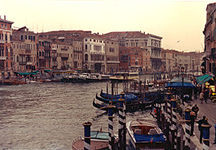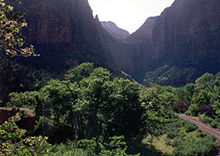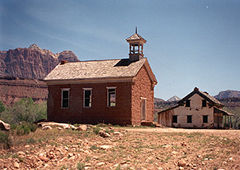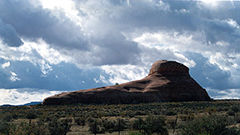LUKE 17: 39 AND MATTHEW 24: 28
Home Page
Photo Page
Contact Page
Favorite Links
MYSTERY IN REVELATION 17 APRIL 2006
THE SPIRIT OF MENTAL CONFUSION MARCH 2006
IRRATIONALIST AND OCCULT INFLUENCES ON THE DOT COM CULTURE
BE YE OF SOUND MIND AND WATCH UNTO PRAYER
MYSTERY BABYLON, GNOSTICISM, AND THE FORCE
LUKE 17: 39 AND MATTHEW 24: 28
GERMAN PROTESTANT SUPPORT OF HITLER, OBEDIENCE TO BAD GOVERNMANT AND ROMANS 13
Luke 17: 39 and Matthew 24: 28
In Luke 17: 34-37 Jesus tells his disciples "I tell you, in that
night there shall be two men in one bed; the one shall be taken, and
the other shall be left. Two women shall be grinding together: the
one shall be taken, and the other left. Two men shall be in the
field: one shall be taken, and the other left."
The disciples asked Jesus where these people were going to be taken
to. They asked him in verse 37, "Where Lord? And he said unto them,
Wheresoever the body is, thither will the eagles be gathered
together."
You have to put Luke 17: 34-37 together with Matthew 24: 28 to fully
understand what Jesus is saying.
In Matthew 24: 28 he says "For wheresoever the carcase is, there will
the eagles be gathered together."
Oh, so the "body" in Luke 17: 34-37 is not the Body of Christ, but is
a dead carcase. Those who are taken in Luke 17: 34-37 become dead
carcases. Why would eagles gather around a dead carcase? Maybe they
are not eagles. Lets look at what Vine's Expository Dictionary of New
Testament Words has to say about the Greek word, aetos, translated as
eagles in the King James. Vine says "Aetos, an eagle (also a
vulture), is perhaps connected with aemi, to blow, as of the wind, on
account of its windlike flight."
Aetos is Strong's number 105. Plugging this number into the Greek
slot on www.houlton.net/monk for Thayer's Lexicon, we get pretty much
the same definition of an Aetos as Vine's, and there it also says:
"an eagle: since eagles do not usually go in quest of carrion, this
may to a vulture that resembles an eagle."
But what does "taken" mean? The dispensationalists jump on"taken"
and say this is the rapture, that those taken are brought to heaven
to escape the Great Tribulation. But the dead carcases in Matthew
24: 28 argue against this interpretation. Those taken die,
When are they taken?
We should consider the possibility that those who are taken, while the
faithful Christians are left, are those in the apostate churches who
do not come out of their false doctrines and seek Christ's truths.
This happens before Christ returns.
I Peter 4: 17 says "For the time is come, that judgment must begin at
the house of God: and if it first begin at us, what shall the end be
of them that obey not the gospel of God?"
The House of God refers to the churches, and within those churches
the majority of people are into false doctrines even now and more so
as we come closer to the Tribulation, that is, the Fifth or Sixth
Seals (Revelation 6: 9-10) or the First Trumpet (Revelation 8: 7).
There are some texts in the Old Testament that discuss the fate of
three or more groups of people. Lets start with Zechariah 13: 8-9. It
says "...two parts shall be cut off and die; but the third part shall
be left therein. And I will bring the third part through the fire,
and will refine them as silver is refined, and will try them as gold
is tried: they shall call on my name, and I will hear them: I will
say, It is my people: and they shall say the Lord is my God."
The two thirds who are to be cut off and will die could be two thirds
of those in the apostate churches, while a third of them wake up and
come through trial to the full truths of Christ.
There is in Ezekiel 5: 1-4 and 5: 12-13 an odd metaphor about Ezekiel
cutting off his hair and beard, burning a third of it in fire "in the
midst of the city when the days of the siege are fulfilled," and he is
to take another third and smite it about with a knife, and still
another third are to be scattered in the wind. But he is told to take
a few and bind them in his skirts. This few in number could be the
144,000 of Revelation 7: 3-8. I don't think that the reference here
to when to the days of the siege are fulfilled necessarily limits
this text to the fall of Jerusalem in 70 A.D. The siege might refer to
the future campaign by the forces of the antichrist against the
Christian church members, some of whom will scatter in running from
their enemies.
Those scattered in the wind - if this is during the Tribulation period
- may represent the one third in Zechariah 13: 9 who are brought
through the fire and purified. The other two thirds are burned or
killed with a knife.
Ezekiel 5: 12-13 goes into more detail by saying a third will "...die
with the pestilence, and with famine shall they be consumed in the
midst of the fire: and a third part shall fall by the sword...and I
will scatter a third part into all the winds and I will draw out a
sword after them."
Verse 13 goes on to say "Thus shall mine anger be accomplished, and I
will cause my fury to rest upon them, and I will be comforted: and
they shall know that I the Lord have spoken it in my zeal, when I
have accomplished my fury in them."
Finally, there is another strange parable in Isaiah 28: 24-25 about
planting five kinds of seed. The first two kinds of seed are the
fitches and cummin, the third, wheat, the fourth barley and the fifth
rye. Verse 25 says the plowman will "...cast in the principal wheat
and the appointed barley and the rye in their place." This text
does not say anything about the fate of these five groups. But the
word "principal" for wheat and "appointed" for the barley and the rye
may have prophetic meaning. Wheat is the main grain crop, which might
represent a larger group of people, perhaps the entire apostate church
in the Tribulation. The "appointed" barley might be the Remnant of
Israel, or one of the Remnants of Israel, perhaps the 144,000. The rye
could represent another group not seen in Zechariah 13: 8-9 or in
Ezekiel 5: 1-3.
John Gill in his commentary on Zechariah 8-9 suggests that the one
third who come through the fire and are purified are the 144,000 and
those in Sardis who have not defiled their garments and are to walk
with the Lord in white. Gill makes the four winds of Revelation 7: 1
into a metaphor for persecution of Christians during many centuries
though. The text on those in Sardis who have not defiled their
garments is Revelation 3: 4.
The two thirds who die in Zechariah 13: 8-9 and in Ezekiel 5: 1-3
could be those taken in Matthew 24: 28 and in Luke 17: 39. Those left
may be initially the one third in Zechariah 13: 8-9 who are brought
though the fire and refined, The few in number of Ezekiel 5: 3 are
also among those not taken.
God says in Isaiah 10: 5-6 that he will send the Assyrian who is
called he rod of mine anger against a "... hypocritical nation (or
people) and against the people of my wrath will I give him the charge
to take a spoil, and to take the prey and to tread them down like the
mire of the streets."
That this text may have had a fulfillment in the military defeat and
captivity of Israel and then later of Judah does not necessarily
mean it cannot have a second fulfillment in the end time. The Assyrian
may in the end time represent the forces of the antichrist who kill
those in the apostate churches. Bernard
In Luke 17: 34-37 Jesus tells his disciples "I tell you, in that
night there shall be two men in one bed; the one shall be taken, and
the other shall be left. Two women shall be grinding together: the
one shall be taken, and the other left. Two men shall be in the
field: one shall be taken, and the other left."
The disciples asked Jesus where these people were going to be taken
to. They asked him in verse 37, "Where Lord? And he said unto them,
Wheresoever the body is, thither will the eagles be gathered
together."
You have to put Luke 17: 34-37 together with Matthew 24: 28 to fully
understand what Jesus is saying.
In Matthew 24: 28 he says "For wheresoever the carcase is, there will
the eagles be gathered together."
Oh, so the "body" in Luke 17: 34-37 is not the Body of Christ, but is
a dead carcase. Those who are taken in Luke 17: 34-37 become dead
carcases. Why would eagles gather around a dead carcase? Maybe they
are not eagles. Lets look at what Vine's Expository Dictionary of New
Testament Words has to say about the Greek word, aetos, translated as
eagles in the King James. Vine says "Aetos, an eagle (also a
vulture), is perhaps connected with aemi, to blow, as of the wind, on
account of its windlike flight."
Aetos is Strong's number 105. Plugging this number into the Greek
slot on www.houlton.net/monk for Thayer's Lexicon, we get pretty much
the same definition of an Aetos as Vine's, and there it also says:
"an eagle: since eagles do not usually go in quest of carrion, this
may to a vulture that resembles an eagle."
But what does "taken" mean? The dispensationalists jump on"taken"
and say this is the rapture, that those taken are brought to heaven
to escape the Great Tribulation. But the dead carcases in Matthew
24: 28 argue against this interpretation. Those taken die,
When are they taken?
We should consider the possibility that those who are taken, while the
faithful Christians are left, are those in the apostate churches who
do not come out of their false doctrines and seek Christ's truths.
This happens before Christ returns.
I Peter 4: 17 says "For the time is come, that judgment must begin at
the house of God: and if it first begin at us, what shall the end be
of them that obey not the gospel of God?"
The House of God refers to the churches, and within those churches
the majority of people are into false doctrines even now and more so
as we come closer to the Tribulation, that is, the Fifth or Sixth
Seals (Revelation 6: 9-10) or the First Trumpet (Revelation 8: 7).
There are some texts in the Old Testament that discuss the fate of
three or more groups of people. Lets start with Zechariah 13: 8-9. It
says "...two parts shall be cut off and die; but the third part shall
be left therein. And I will bring the third part through the fire,
and will refine them as silver is refined, and will try them as gold
is tried: they shall call on my name, and I will hear them: I will
say, It is my people: and they shall say the Lord is my God."
The two thirds who are to be cut off and will die could be two thirds
of those in the apostate churches, while a third of them wake up and
come through trial to the full truths of Christ.
There is in Ezekiel 5: 1-4 and 5: 12-13 an odd metaphor about Ezekiel
cutting off his hair and beard, burning a third of it in fire "in the
midst of the city when the days of the siege are fulfilled," and he is
to take another third and smite it about with a knife, and still
another third are to be scattered in the wind. But he is told to take
a few and bind them in his skirts. This few in number could be the
144,000 of Revelation 7: 3-8. I don't think that the reference here
to when to the days of the siege are fulfilled necessarily limits
this text to the fall of Jerusalem in 70 A.D. The siege might refer to
the future campaign by the forces of the antichrist against the
Christian church members, some of whom will scatter in running from
their enemies.
Those scattered in the wind - if this is during the Tribulation period
- may represent the one third in Zechariah 13: 9 who are brought
through the fire and purified. The other two thirds are burned or
killed with a knife.
Ezekiel 5: 12-13 goes into more detail by saying a third will "...die
with the pestilence, and with famine shall they be consumed in the
midst of the fire: and a third part shall fall by the sword...and I
will scatter a third part into all the winds and I will draw out a
sword after them."
Verse 13 goes on to say "Thus shall mine anger be accomplished, and I
will cause my fury to rest upon them, and I will be comforted: and
they shall know that I the Lord have spoken it in my zeal, when I
have accomplished my fury in them."
Finally, there is another strange parable in Isaiah 28: 24-25 about
planting five kinds of seed. The first two kinds of seed are the
fitches and cummin, the third, wheat, the fourth barley and the fifth
rye. Verse 25 says the plowman will "...cast in the principal wheat
and the appointed barley and the rye in their place." This text
does not say anything about the fate of these five groups. But the
word "principal" for wheat and "appointed" for the barley and the rye
may have prophetic meaning. Wheat is the main grain crop, which might
represent a larger group of people, perhaps the entire apostate church
in the Tribulation. The "appointed" barley might be the Remnant of
Israel, or one of the Remnants of Israel, perhaps the 144,000. The rye
could represent another group not seen in Zechariah 13: 8-9 or in
Ezekiel 5: 1-3.
John Gill in his commentary on Zechariah 8-9 suggests that the one
third who come through the fire and are purified are the 144,000 and
those in Sardis who have not defiled their garments and are to walk
with the Lord in white. Gill makes the four winds of Revelation 7: 1
into a metaphor for persecution of Christians during many centuries
though. The text on those in Sardis who have not defiled their
garments is Revelation 3: 4.
The two thirds who die in Zechariah 13: 8-9 and in Ezekiel 5: 1-3
could be those taken in Matthew 24: 28 and in Luke 17: 39. Those left
may be initially the one third in Zechariah 13: 8-9 who are brought
though the fire and refined, The few in number of Ezekiel 5: 3 are
also among those not taken.
God says in Isaiah 10: 5-6 that he will send the Assyrian who is
called he rod of mine anger against a "... hypocritical nation (or
people) and against the people of my wrath will I give him the charge
to take a spoil, and to take the prey and to tread them down like the
mire of the streets."
That this text may have had a fulfillment in the military defeat and
captivity of Israel and then later of Judah does not necessarily
mean it cannot have a second fulfillment in the end time. The Assyrian
may in the end time represent the forces of the antichrist who kill
those in the apostate churches. Bernard

Sample Photo 1

Brief Description
Sample Photo 2

Brief Description
Sample Photo 3

Brief Description
Sample Photo 4

Brief Description
Sample Photo 5

Brief Description
Sample Photo 6

Brief Description
Free
Feel free to download and use images.